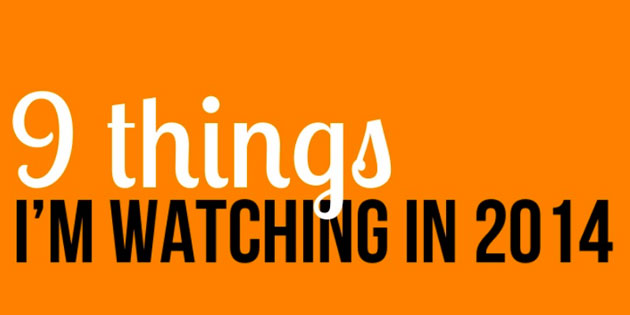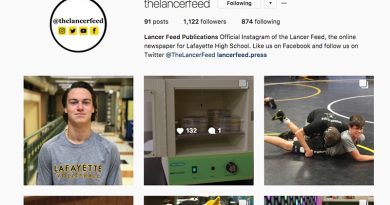Tips from a veteran teacher on writing (or not writing) a Letter of Recommendation for a student

One constant we as advisers and instructors face are students asking us to write them letters of recommendation.
Usually, that is easy enough. The student has worked hard and is deserving of our help. For outstanding staff members, that is an easy and pleasant “yes.”
But then, there is the rare student who has earned a “no.” Yet, he or she argues with you because there are no written criteria (except for attendance), so no “rules” were violated.
For those few, I developed a comprehensive list reasons when I would say “no.” That list is still on my former class/journalism program website, on a tab called “Letter of Recommendation criteria.”
Here is the first sentence readers see after opening the tab:
“Mr. Webber is always willing to write deserving students a letter of recommendation. However, if he declines to write you one, please see the list below. If you see yourself in any of the items below, then you know what you have to improve on in order to receive a letter of recommendation.”
That is followed by:
“How NOT to receive a letter of recommendation.”
Then:
“Note: The clock on items 2-11 starts at the beginning of each semester in August and January. Item number 1 results in a permanent no.”
Ten of the items are school or print/online journalism program specific and include behavior and grades in my classes as well as in other classes, and attendance, especially in violation of Texas’ 90 percent rule.
However, at the top of the list, number one, is the item that would guarantee a student from ever getting a letter of recommendation from me:
“1. Student turns in a completed story, photo, or other creation offered for publication (not a rough draft) that shows provable evidence of plagiarism, uses false information, or is lacking in more or more areas of journalism ethics.”
A different type of journalism program
I was in a unique situation for conducting a journalism program at my former school, the district’s fine arts/communication magnet school where I was a founding faculty member.
Here is how my program (and the others at the school) functioned.
The district set up existing courses listed in the state’s Texas Essential Knowledge and Skills catalog in such a way to allow us teachers to keep students we recruited all four years. One of our goals was to have students show excellence in their areas after 4 years of study.
So, I had four blocks of journalism-related classes but no “staff,” the why being explained below. Thus, I created a system that I thought worked well enough over the 26 years I was at the school before I retired.
Two “shifts” of students
The school day was set up so that we had students from the district’s three comprehensive high schools come in by buses from their “home schools” for a morning core class and fine arts/communication elective before returning to their “home” schools for afternoon classes.
The second group came in after the morning students left and had their core class and elective before also heading back to their “home” schools for sports, band, clubs, and such, or other activities outside of school.
The result was that no students were available after classes ended for the day. Thus, I had to create a system in order to have a “staff,” populated by students from my four class periods. That turned out to be appointing students to ad-hoc committees for things like writing editorials, editing stories, various decision making, page design, and other varied tasks. Those committees changed frequently.
The system was always evolving, but had weaknesses. I denied a senior who tried taking advantage of a weakness a letter of recommendation.
Since I had to have grades, and writing was a big part of class, I assigned stories and used a rubric to grade them, then give 1-on-1 instruction in weak areas.
A story with some fabrication
In early December 2018 the senior, who was also author and artist of a cartoon strip that had received awards in state clip contests, came in with a story idea. He said a well-known European DJ had been his neighbor back in elementary school and that he could write a story on this DJ’s career. The story idea sounded good to me so I told the student to proceed.
He turned in a decent enough story of this DJ who toured Europe and the US.
But it had a weakness — there were no quotes from the DJ.
“Do you have his email address?” I asked.
“No,” the student said.
“Here’s his assistant’s name and email address. Please contact her and send her questions. You need quotes from the DJ,” I told him, adding that I got the name and address from the “contact us” part of the DJ’s website. (Prepared questions and follow-ups were a separate grade, by the way.)
After a couple of days, the student showed me hand-written material on notebook paper and said those are the questions he asked and the DJ’s answers. Then a couple of days later he submitted his story, and I gave a copy to the editing committee to edit. I graded the story according to the rubric.
I gave the editing committee chairperson a copy of the assistant’s email and told him to double check that the quotes were accurate. It turned out that the students on the committee were excited about the paper having a story on the DJ and did not give it the scrutiny it deserved.
A student not part of the editing committee approached me a couple of days later and said the writer was bragging that he fabricated the part of the story where the DJ was the writer’s neighbor.
So, I contacted the director of the district’s records department to see if there was a way to find out if somebody with the DJ’s name had attended a certain elementary school during certain years. Since records from that time were on paper and stored in boxes it would be several days before he or a subordinate could respond, due to the demands for records requests.
I then emailed the assistant, who said the DJ had never lived in the United States, and found out the writer had never submitted any questions.
By then it was early January and we were in the second semester. It was too late to change the student’s grade to reflect the fabricated story.
But I showed him the assistant’s email message and asked him to revised the story and to contact the assistant, which he refused to do.
Of course, the story did not run.
A few days later the student said he had a potential job lined up but needed a letter of recommendation from a teacher, and asked me whether I would write one for him.
Normally I would have, especially since he had been in my program 4 years and was an award-winning cartoonist, but given the situation, I referred him to rule number one.
Having the tab listing requirements for receiving (or not receiving) a letter of recommendation turned out to be worth the effort I put into creating it.
Effective letters of recommendations
A letter of recommendation written by a teacher is one in which the writer discusses the qualities and capabilities of a student being recommended, and of his his/her abilities and suitability for a job, college admissions, scholarship, or other reason.
A letter should include, according to indeed.com/career-advice, a:
- Brief introduction stating who you are, your connection to the student, and your area of expertise.
- Overview of the student’s strengths as you have seen them and as they relate to the student.
- Personal story that elaborates on one two traits the applicant has exhibited in your journalism, broadcast, yearbook, or other class.
- Closing statement that summarizes why the student would be a good fit for this opportunity.
- Signature that includes your name and contact information.
Having the student give you an up-to-date resume and an explanation of the specific situation for which the letter is needed will help you focus the letter to the student’s needs and to have relevant material to further customize the letter.
Have a template handy
After 4 years I would usually have 8 to 12 seniors from the 20 or more freshmen I had recruited. I needed to write letters of recommendation for a yearly scholarship award the local daily paper had funded that required a portfolio of the students’ work during their time in the program. In addition, they would ask for letters to put with their college and job applications, and for scholarship applications through the school district and on their own. There were many reasons they would ask for letters, and many juniors also wanted letters of recommendation for job applications.
That was a lot of writing!
I quickly found out that the only way to cope was to have a template into which I inserted relevant information, then from that customize the letter to the student’s need. I would usually need about one-half hour to have one ready, and required students to give me a 1-day notice when they needed a letter. I kept the letters and would update them as needed.
I created a distinctive letterhead as part of the portfolio in InDesign and kept several back-up copies in my former email just in case. I also kept copies of the students’ letters in my work email as well.
While I no longer have the template for my students’ letter of recommendation or any of their letters, I found a letter in my personal email account I wrote after I retired and moved to a different city, for a former student as part of a job application in 2020. I have included it with this article for reference. It contains just about all of the elements I included in student letters.
More writing tips
Here are additional tips for writing letter of recommendations, from indeed.com/career-advice.
- Keep it positive. The letter should affirm that the person is a strong candidate with no hesitation on your part.
- Use a standard business letter format and tone. Tone should be formal and polite. Try to use a letterhead if possible. Length should be at least one but no more than two pages.
- Focus on the student’s most important qualifications. Discuss two or three of the candidate’s most relevant achievements and provide specific examples to show their capabilities.
- Follow the student’s request instructions. For example, do you return the letter to the student, or email or snail mail it directly to a recipient? Be sure to observe deadlines.
- Proofread your letter. It never hurts to have a fresh pair of eyes review the letter to catch those pesky, embarrassing errors.
Here’s a sample letter I have written in the past.
It seems letters of recommendation will always be a part of teachers’ things to-do list. Having a template to customize and being aware of the tips above can make this chore pass a lot more quickly and easily.




